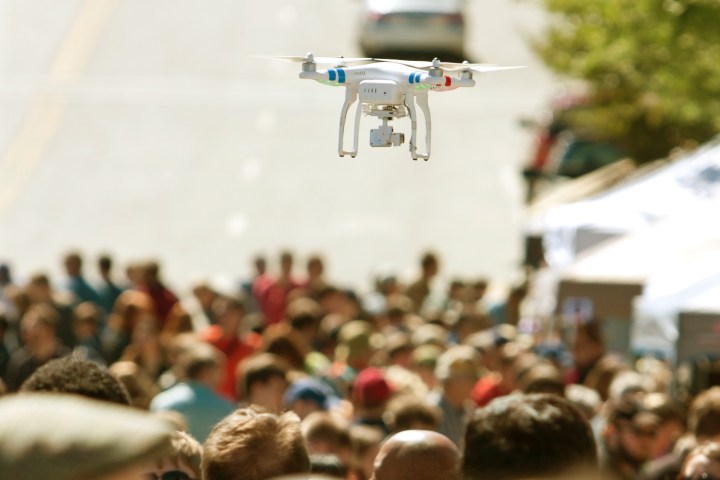
Flock, an artificial intelligence company formed out of Imperial College London, Oxford University and Cambridge University, is currently developing a risk analysis program for commercial drones, from aerial photographers to drone use on a larger scale, such as delivering Amazon packages. The program uses real-time weather information and the location of buildings. But what’s perhaps even more impressive is that the system can also predict what areas will be full of people so it can choose a route around congested areas or a time when those areas will be less crowded.
“We extract actionable insights and predictions from big data by extracting multiple data sources and amassing a wealth of historical data in cities,” Flock CEO Ed Leon Klinger told Digital Trends. “The machine learning element of our technology is what allows us to predict when and where certain areas of cities will become particularly hazardous for drones.”
Along with working to help increase safety for both the public and the drone’s often expensive cargo, Flock will likely be a tool for insurance companies to help quantify the risks of drone flight. Without a method for companies to predict the risks, drone insurance premiums remain high, according to Flock.
Flock uses artificial intelligence to both identify and quantify the risks of certain flights, then can calculate the safest route using the information about the weather, location of buildings and the most congested areas for people and vehicles. The platform displays risks and high traffic areas in real time on a map, but also uses several sources to predict where the potential hazards will be in order to schedule flights ahead of time.

The first test market for Flock will likely be London and Singapore, though Klinger said there is a lot of interest in the U.S. and Japan as well. While the startup doesn’t have an official release date yet, Klinger said the group is growing rapidly and currently negotiating with potential partners.
The company’s goal is to become the standard safety tool for drone use on a global scale.




